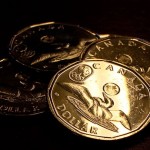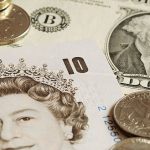 Gold was little changed on Wednesday, holding in a narrow daily range, as investors avoided entering large positions before the conclusion of Feds last policy meeting this year.
Gold was little changed on Wednesday, holding in a narrow daily range, as investors avoided entering large positions before the conclusion of Feds last policy meeting this year.
Comex gold for delivery in February gained 0.37% to $1 198.7 per troy ounce by 07:56 GMT, having shifted in a daily range of $1 199.8-$1 195.3 an ounce. The precious metal fell 1.11% on Tuesday to $1 194.3, but not before it dropped to $1 187.8, its lowest since December 8th.
Later today we will see the end of the two-day US Federal Reserve meeting where officials are debating over whether to increase interest rates, which have been held near zero since 2008. After the meeting the Federal Open Market Committee is to release a statement regarding its decision due at 19:00 GMT.
On its last meeting in October, Fed officials restated that they will keep borrowing costs at low rates for a “considerable time.” However, since then the US economy has significantly improved and more jobs than expected were created.
An eventual interest increase next year would boost the dollar and thus hurt the non-interest-bearing gold. However, US inflation is still below Fed’s targeted level and there are signs of weakness across Europe and Asia, which may tip the scales in favor of voting against a US rate hike.
The US dollar index for settlement in March edged up 0.06% to 88.350 at 07:58 GMT, prices held in a daily range of 88.385 and 88.085. The US currency gauge lost 0.43% on Tuesday to 88.297, after it reached 87.830, its lowest since December 1. A stronger greenback makes dollar-denominated commodities more expensive for holders of foreign currencies and curbs their appeal as an alternative investment.
“I think the Fed will reaffirm that growth has indeed picked up and the data looks positive for the coming year,” said Barnabas Gan, analyst at OCBC Bank, cited by CNBC, and added that Fed officials would refrain from increasing borrowing costs.
Many other analysts support Mr. Gans opinion on the subject, including Paul Krugman, winner of the 2008’s Nobel Memorial Prize in Economic Sciences and Edward Meir, an analyst at INTL FCStone. Mr. Meir suggested that if the outcome of the Fed meeting is in line with his assessment, the precious metal would receive a short-term boost.
“Everyone’s waiting to see if the Fed will keep or abandon its commitment to low rates for a considerable time, which will affect the dollar and hence precious metals,” Xia Yingying, an analyst at Nanhua Futures, wrote in a note today cited by CNBC. “Investors positioning for an imminent rate hike are reflected in the ETF flows. The possibility of Russian gold sales has also weighed on prices.”
Gold prices could be affected by the weaker ruble, which lost 11% against the dollar on Tuesday, despite the 6.5% interest rate hike to 17%. During this week, the currency dropped almost 20% against its US counterpart, or a total of 50% since the beginning of the year. Mr. Gan said that Russia might sell its gold holdings in order to finance spending.
“If that happens, we would see gold taking another step down, possibly closer to our year-end forecast of $1,150,” he added.
Assets in the SPDR Gold Trust, the biggest bullion-backed ETF, fell for a second day by 1.8 tons to 721.56 tons on Tuesday.
Pivot Points
According to Binary Tribune’s daily analysis, February gold’s central pivot point on the Comex stands at $1 202.0. If the contract breaks its first resistance level at $1 216.2, next barrier will be at $1 238.1. In case the second key resistance is broken, the precious metal may attempt to advance to $1 252.3.
If the contract manages to breach the S1 level at $1 180.1, it will next see support at $1 165.9. With this second key support broken, movement to the downside may extend to $1 144.0.





